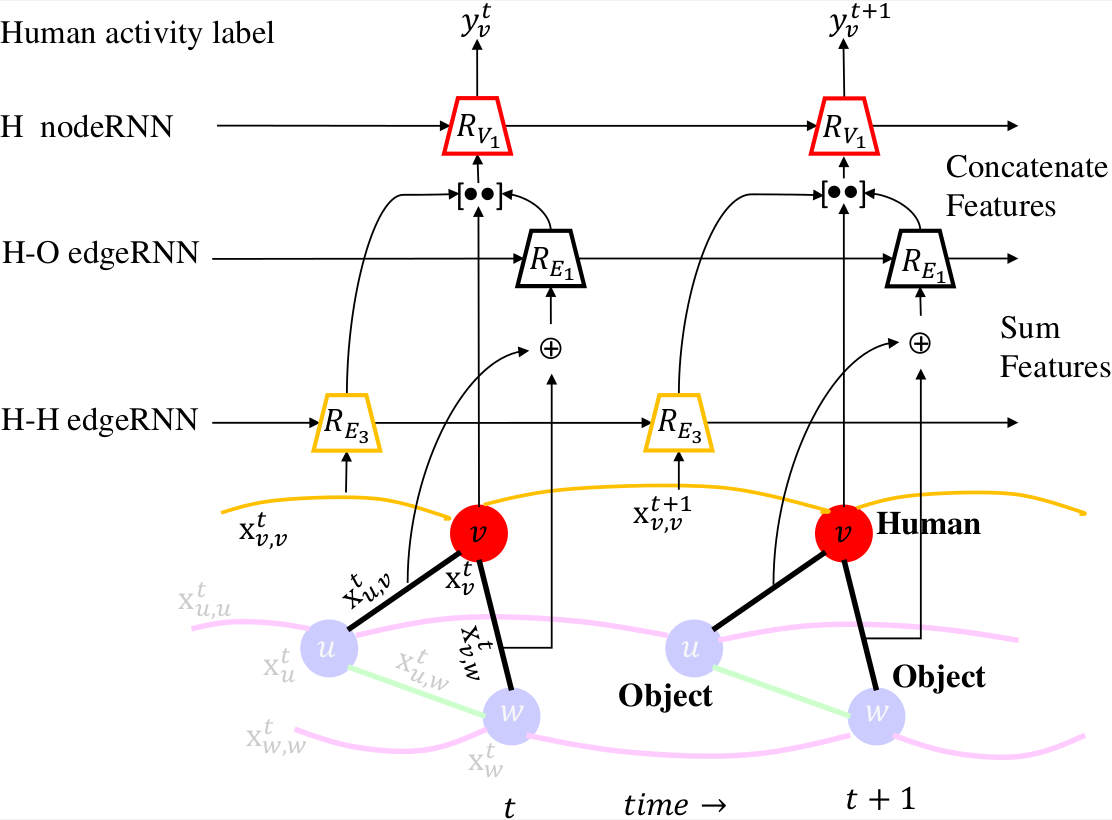
Structural-RNN: Deep Leaning on Spatio-Temporal Graphs
Ashesh Jain, Amir Zamir, Silvio Savarese, Ashutosh Saxena
CVPR 2016 (Full ORAL) [arXiv] [supplementary] [Code]
Deep Recurrent Neural Network architectures, though remarkably capable at modeling sequences, lack an intuitive high-level spatio-temporal structure. That is while many problems in computer vision inherently have an underlying high-level structure and can benefit from it. Spatio-temporal graphs are a popular flexible tool for imposing such high-level intuitions in the formulation of real world problems. In this paper, we propose an approach for combining the power of high-level spatio-temporal graphs and sequence learning success of Recurrent Neural Networks (RNNs). We develop a scalable method for casting an arbitrary spatio-temporal graph as a rich RNN mixture that is feedforward, fully differentiable, and jointly trainable. The proposed method is generic and principled as it can be used for transforming any spatio-temporal graph through employing a certain set of well defined steps. The evaluations of the proposed approach on a diverse set of problems, ranging from modeling human motion to object interactions, shows improvement over the state-of-the-art with a large margin. We expect this method to empower a new convenient approach to problem formulation through high-level spatio-temporal graphs and Recurrent Neural Networks, and be of broad interest to the community.

Structural-RNN: Deep Leaning on Spatio-Temporal Graphs
Ashesh Jain, Amir Zamir, Silvio Savarese, Ashutosh Saxena
CVPR 2016 (Full ORAL) [arXiv] [supplementary] [Code]
Corresponding author: ashesh@cs.cornell.edu